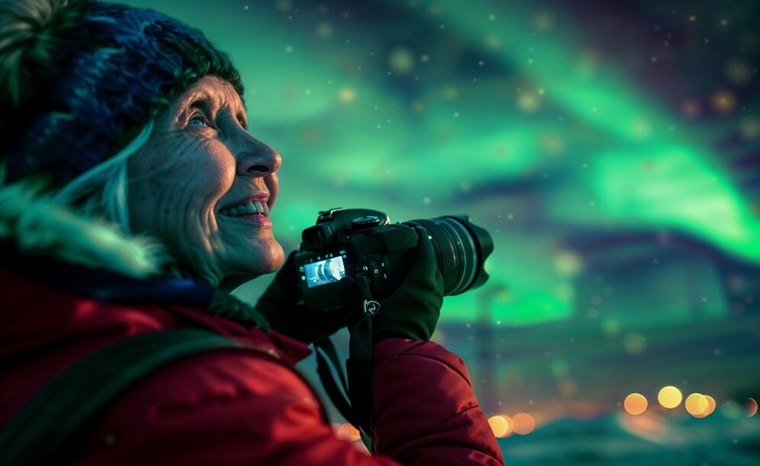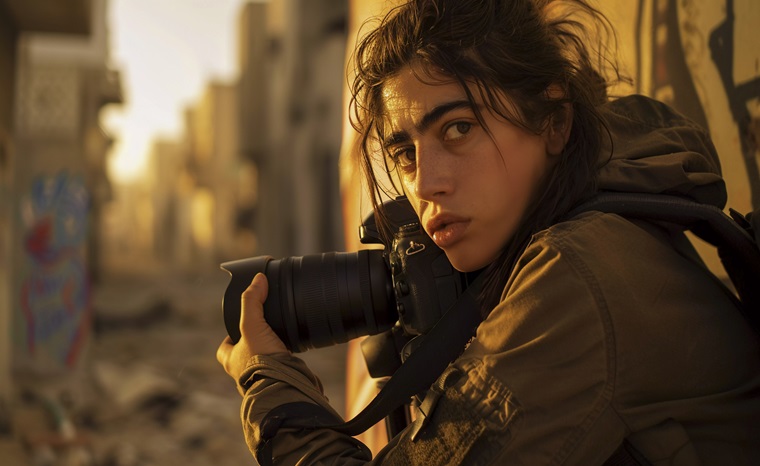Cinematography and Photography Which is Better?
Cinematography As one of the main areas of the contemporary visual culture cinematography have their essential functions in telling stories and visual communication. Graphic design and illustration are two essential disciplines in the process of generating interesting visuals, though they are different in their functions and the talent acquired. This blog post tries to provide an understanding of the differences between cinematography and photography and how they can be used: along with the educational options in this field and some real-life uses such as wedding cinematography.
Understanding Cinematography and Photography
cinematography and photography are different to some extent and similar in the way they are watched in various fields of specialization they have a certain similarity in their main tasks but differ in their application and results. Cinematography is a subsidiary of filmmaking which involves the practice of photographing the motion picture projector or through media that is electronic. It consists of the use of the positioning of the camera, movement, light, and color balance to tell a story in the video. Still, on the other hand, Photography deals with the act of taking still images that capture scenes at a particular instance in time.
Cinematography is a term halfway between the two fields, given the use of cinematographic techniques in a still image. This implicates the intended hybrid approach perfectly for the development of information-charged photojournalistic and new-age photo stories Cinematography.
Cinematography Courses, An Overview
Cinematography In more detail it is possible to note that for those people who want to get closer to the cinematographic field, there are quite a lot of educational opportunities. The cinematography courses provide comprehensive knowledge and practice in the handling of cameras, workplaces with lights, and other methods of visual narration. These courses equip aspiring cinematographers with the knowledge and skills that is required in shooting different media platforms including films, television shows and even internet-based technologies.
Cinematography courses after the 10th are best for students who want to start this field in their early years of education. They usually include mandatory subjects and allow the students to gain some real-life practice in Cinematography and Photography.
Hyderabad’s ’Students those who are interested in making career in Cinematography can find several institutions that provides specialized classes in cinematography. Such courses are oriented according to the local industry and are very practical, involving the use of modern equipment in practice. For those who have a wish to gain some more knowledge, the search for cinematography courses in Hyderabad may become a great beginning.
The Impact of Cinematography and Photography on Visual Storytelling
Introduction to Visual Storytelling: Visual narration is a technique that is employed in cinematography as well as photography to help create narratives and elicit certain emotions. This section shall highlight how each of the media assists in the narration of the story as well as the strengths of each in the process.
Cinematography and Narrative Depth: Cinematography is a major part of the overall concept of the movie and works in filmmaking and videography. Here, it is possible to adequately use all principles of cinematography, and what will be the result, at least as regards the view of the audience – respectively, it is possible to leave the decision to a cinematographer. This section will explain how techniques like close-ups, wide shots, tracking shots and others contribute to creating tension or portraying emotions or adding value to a movie’s plot.
Photography and Moment Capture: Photography, on the other hand, secures or explain a delimited story within a particular time frame. This section shall narrow down to how the photographers apply composition, light, and time to capture desirable shots with the ability to get a message across through a single picture. Concerning the approach, samples of photographs and the effect those images have on narrative depiction will be included.
Comparative Analysis: Bebinka the difference between cinema and photography in the manner that both media deal with the idea of narrative. Compare and contrast the advantages and disadvantages of storytelling via each of these media means based on aspects such as complexity, passion, and enthusiasm

Future Ready How RVR School of Photography Equips Students for Industry Success By Simran
Cinematography in Weddings, Adding a Cinematic Touch
Cinematography and photography techniques can make a huge difference in weddings an example of an event where this technique can be used to boost the storytelling as much as possible. Compared to traditional ways of wedding photography where a wedding is photographed in just a still manner, cinematography wedding video in Hyderabad has the aspect of Cinematography which adds the movement of a wedding.
The cinematography in a Wedding entail the use of certain techniques like- motion of the camera, good light, and good angles among others. But this approach also gives people a feeling of how the event was and gives the audience more excitement which makes the day memorable for the couples.
Comparing Cinematography and Photography
If one compares Cinematography, then it becomes possible to understand that each of them has its objectives and purpose for the given project. The blending of good Cinematography gives the feel of both fields in capturing good shots. This kind of approach is especially useful in all kinds of artistic design but also graphic design.
Aerial photography & videography is one such good example where Cinematography come hand in hand. Drones offer considerable possibilities for cinematographers as well as photographers since flying devices allow capturing a bird’s eye view, and dynamic shots that were untouchable before. Wedding photography and videography entails this flight kind of aerial Cinematography which demonstrates the usefulness of integrating various visual strategies in one story.
In contrast, Cinematography serves different primary functions: Photography freezes time while Cinematography and Photography shows motion and time. Having a clear understanding of the differences and similarities between these fields will allow you to decide which course to follow for a particular project or career.
The Role of the Cinematographer and Photographer
The Cinematographers have different responsibilities however they work hand in hand. Cinematography and Photography might use both skills where they will incorporate the two skills to produce content-rich work to exploit the specialty of both fields. To put it in perspective, a Cinematography and Photography photo may incorporate techniques characteristic of the cinematography to a still image for effect.
The relationship between Cinematography is closely tied together and understanding the main differences between the two is beneficial in today’s advertisement and visual media world, as well as the fact that mastering both forms and skills leads to various potential job offers. In a movie production as well as events Cinematography, having a sound knowledge of both will indeed do your work a lot of good.
The Role of the Cinematographer and Photographer
Introduction to Current Trends: Similar to any other forms of art, cinematography and photography progress and experience upgrades periodically with the existing trends. Widely used in the subsequent sections, this section will provide an overview of the current trends and innovations of both industries.
Technological Advancements in Cinematography: Discuss new trends in cinematography that involve such technologies as new camera; Virtual Reality and Augmented Reality. explain how these technologies are changing the way of telling stories and the new opportunities that appear in the creative process.
Emerging Trends in Photography: Stress the fact that new trends appear in the world of photography, for example, drone photography, extension of the creativity in the smartphone’s photography, and the impact of social media. Learn how these trends affect the practices of photography and how the photographers are embracing the advancement in technology.
AI and machine learning is one of the most important topics to understand how the world changes or is changing. What does it mean for cinematography as well as for photography with the advent of artificial intelligence (AI) and machine learning? Find out how AI works currently in the advertising and video business, for instance how it helps in image identification, untangling the picture, and predictive analysis, and how such trends may affect artists and creatives.
Sustainable Practices: Think about the development of environmentally friendly tactics in visual arts. Find out how cinematography is embracing environmental issues and integrating the environmentally friendly approach into photography.
The Business Side of Cinematography and Photography
An Overview of the Industry Environment: The practical aspects in cinematography and photography are important to know for the future professionals. This section will give brief information about the market status and the demands, job prospect of both domains and more.
Business Models Referral Schemes and Revenue Generation: Explore all the available opportunities for monetizing the cinematography and photography business and their models. Explain how cinematographers as well as photographers can make money through customer relations, paid assignments, royalties, and stocking/stock pictures.
Building a Professional Portfolio: Examine the role of professional portfolios in the careers of both cinematographers and photographers. Post ways of how to develop a portfolio that captures skills, diversity, and creativity, and can be useful in any field. Stress the use of the Internet and social networks as a means of communication and as a primary area for work.
Networking and Career Development: Discover approaches to the organization of networking and professional advancement in the sphere of the visual arts. Guide participating in industry meetings, networking, and using social media in brand development.
Challenges and Opportunities: These areas of discussion should address common issues that the professions in both fields are likely to face which may include, competition in the marketplace, shifting trends in the market place and fluctuations in the economy. Deliberate likelihoods of development and advancement.

Creative Techniques and Approaches in Cinematography and Photography.
Introduction to Creative Techniques: Since the two fields are related to creation of visual content, there is usually the use of creative processes in cinematography and photography. It is in this section that different creative solutions and the distinction of the two fields of study shall be discussed.
Cinematographic Techniques: Explain specific creative ways relating to the cinematography and these include; other aspects such as the use of depth of field, choosing of appropriate camera angles, and setting appropriate lighting. Give specific instances of how these strategies are employed to set the mood tone and act upon character action and plot development.
Photographic Techniques: Learn practical tips and tricks on how to make better photos, the notions of exposure and rules, and tips on how to process the photos. Explain how these techniques help photographers offer an angle, draw attention to the detail and express mood.
Hybrid Approaches: Describe the considerations of the use of cinematography and integration of aspects from photography as well. Explain in what way it is possible to incorporate the five blending techniques from both disciplines and achieve more original and aesthetically pleasing designs.
Conclusion: Welcome to RVR School of Photography.
In conclusion, the difference between Cinematography is in the choice and it is determined by the motive of the individual. As for both disciplines, they afford the creation and dissemination of unique forms of visual narrative. Cinematography therefore combines the best of both worlds, providing the overall approach towards making images rigid and interesting.
They serve different purposes but are used for different requirements whether you are looking for cinematography courses after the 10th or searching for specialized cinematography courses in Hyderabad or you are gearing up to take cinematography courses after completion of your 10th or in graduation, understanding the differences between these fields can certainly assist you in predicting your future goals and then plan accordingly. But when it comes to momentous occasions in people’s lives such as weddings, incorporation of cinematographic elements to the cinematography of wedding videos In Hyderabad will go a long way in creating a cinematic feel.
Choosing the right direction in the spheres of visual arts will allow the person to achieve success in the sphere of Cinematography and Photography, or even in both spheres at once.
Clarify Your Doubts (FAQ's)
We reimburse all expenses of the Client for the payment of fines and penalties that were caused by mistakes made by us in accounting and tax accounting and reporting.
We reimburse all expenses of the Client for the payment of fines and penalties that were caused by mistakes made by us in accounting and tax accounting and reporting.
We reimburse all expenses of the Client for the payment of fines and penalties that were caused by mistakes made by us in accounting and tax accounting and reporting.
We reimburse all expenses of the Client for the payment of fines and penalties that were caused by mistakes made by us in accounting and tax accounting and reporting.
We reimburse all expenses of the Client for the payment of fines and penalties that were caused by mistakes made by us in accounting and tax accounting and reporting.
We reimburse all expenses of the Client for the payment of fines and penalties that were caused by mistakes made by us in accounting and tax accounting and reporting.
We reimburse all expenses of the Client for the payment of fines and penalties that were caused by mistakes made by us in accounting and tax accounting and reporting.
We reimburse all expenses of the Client for the payment of fines and penalties that were caused by mistakes made by us in accounting and tax accounting and reporting.

